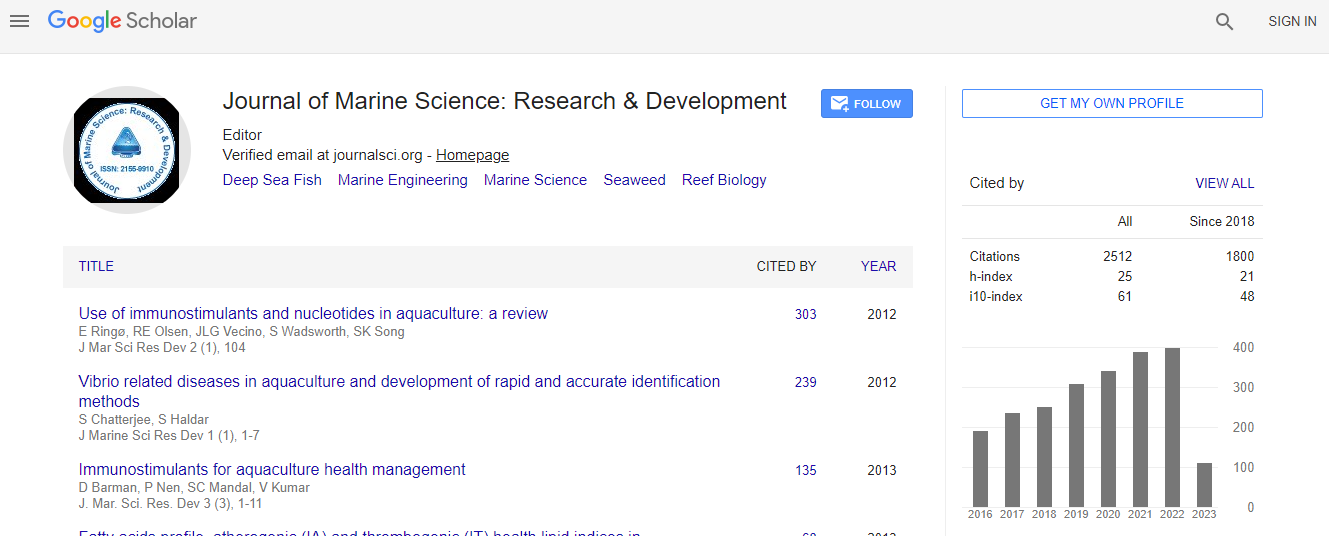Our Group organises 3000+ Global Conferenceseries Events every year across USA, Europe & Asia with support from 1000 more scientific Societies and Publishes 700+ Open Access Journals which contains over 50000 eminent personalities, reputed scientists as editorial board members.
Open Access Journals gaining more Readers and Citations
700 Journals and 15,000,000 Readers Each Journal is getting 25,000+ Readers
Google Scholar citation report
Citations : 3189
Indexed In
- CAS Source Index (CASSI)
- Index Copernicus
- Google Scholar
- Sherpa Romeo
- Open J Gate
- Genamics JournalSeek
- Academic Keys
- ResearchBible
- Ulrich's Periodicals Directory
- Electronic Journals Library
- RefSeek
- Directory of Research Journal Indexing (DRJI)
- Hamdard University
- EBSCO A-Z
- OCLC- WorldCat
- Scholarsteer
- SWB online catalog
- Virtual Library of Biology (vifabio)
- Publons
Useful Links
Recommended Journals
Related Subjects
Share This Page
Features of sedimentation in the equatorial part of the mid-Atlantic ridge
4th International Conference on Oceanography & Marine Biology
Evgeniia Popova, Irina Gablina and Irina Dobretsova
I S Gramberg All-Russia Research Institute for Geology and Mineral Resources of the World Ocean, Russia Geological Institute Russian Academy of Sciences, Russia State Enterprise ├ó┬?┬?Polar Marine Geosurvey Expedition├ó┬?┬Ł, Russia
ScientificTracks Abstracts: J Marine Sci Res Dev
Abstract
We consider the process of biogenic carbonate sedimentation in the equatorial part of the Mid-Atlantic Ridge, within the Russian Exploration Area, at the ore nodes Semenov and Ashadze. The bottom sediments are very unevenly distributed and are presented by strongly calcareous, calcareous, weakly carbonate and carbonate-free varieties. The carbonate sediments are composed by foraminiferal, coccolith-foraminiferal, foraminiferal-coccolith, foraminiferal-pteropod and pteropod silt. Distribution of pteropods, foraminifera, coccolithophorides in sediments is controlled by the levels of isocline and carbonate compensation. The sediments deposited in the plain areas, at the tops of shallow hills, upper terraces, are mostly heavily carbonated and coccolithforaminiferal, at the lower level terraces and the valley bottom they are carbonate and foraminifera-coccolith. Low-carbonate and carbonate-free deposits are represented by the carbonate-clayey and clayey sediments, largely enriched in ore components, reflecting the degree of influence of hydrothermal activity in the process of carbonate sedimentation. The average penetrated sedimentary cover thickness is about 50 cm, it is lower at the ascensions and increases in the local depressions and separate parts of the rift valley bottom. The maximum penetrated thickness reaches 360 cm at the Ashadze ore node. The sediments cross-sections show small admixtures of edaphogenic material (debris of basalts, volcanic glass and ultra-basic rocks) and sulfide minerals - the products of destruction of ore build-ups, as well as authigenic barite minerals, iron oxyhydroxides, aragonite, and others. The geochemical zoning in the proximity of hydrothermal ore bodies recorded in the seabed sediments may be used as criteria for finding DPS. High concentrations of copper and zinc in the ore-bearing deposits allow them to be considered as potential useful minerals.Biography
Evgenia Popova has completed her PhD from the Geological Department of the Leningrad University in Marine Geology. The field of activity is lithology and geochemistry of oceanic sediments. She is studying metalliferous sediments of the oceans in polymetallic sulfide hydrothermal fields. She has published more than 40 papers in reputed journals.
Email: evgeniya_popova@mail.ru

 Spanish
Spanish  Chinese
Chinese  Russian
Russian  German
German  French
French  Japanese
Japanese  Portuguese
Portuguese  Hindi
Hindi 